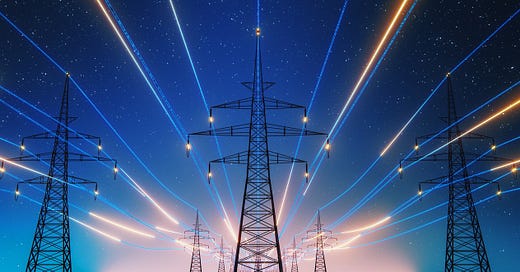Green Power: a Spanish Lesson
Junko's Tech Probe invites others to weigh in on significant events for analysis. Ron Wilson, Junko's long-time editorial partner & tech analyst, sheds light on the recent power grid failure in Spain.
By Ron Wilson
(image source: iStock)
The recent loss of electrical power across the Iberian Penninsula illustrated—in a fashion rather too graphic for the tastes of those involved—an important lesson about power grids and the accelerating shift from fossil-fuel fired turbine generators to wind, and especially to solar, power generation. While it is too soon to say exactly what happened, the outline of the calamity is becoming clearer.
Published reports state that at 12:33 pm on Monday, 28 April, the frequency on the grid serving Spain and Portugal suddenly dropped well below its required 50 Hz. In reaction, in five seconds the grid shed 15 GW of on-line generating capacity and isolated itself from external connections.
But what triggered the sequence of events? And why did it play out as it did? Given the liability and political sensitivity of these questions, answers may be a long time appearing outside the walls of grid operator Red Eléctrica. Yet we can already draw some inferences.
An analog world
It is key to remember that—unlike the digital communications networks we are used to—power grids are enormous analog circuits, full of electromechanical behemoths, giant transformers, and myriads of loads. Electrical current doesn’t travel in packets—it is the result of a continuous interaction between the power sources, the loads, and the transmission network: the real-time solution to a giant set of differential equations.
Automatic controls continuously regulate the voltage and current across this analog network, delivering the required 220V at 50 Hz to retail customers. But if there is a sudden change in either the supply or the load, the controls may not be able to respond quickly enough—or adequately. The huge analog circuit can become unstable. If this happens, generators and big industrial loads will disconnect automatically to protect themselves, the voltage will drop, and the grid will become a huge inventory of isolated, idle devices sitting in the dark.
Such transients can begin in many ways. A failure in a transmission line or a substation can make a large fraction of the load suddenly disappear, generating a massive reaction. A failure at a generating facility—a quite rare event for well-maintained conventional facilities, but a feature in many developing-world power grids—can similarly cause havoc.
But with wind and solar, there is another issue. The wind can suddenly fall. Clouds can block the sun, rather quickly and across wide areas. Quickly these sources can drop to a fraction of their expected output. The grid operator must compensate at once by adding surplus capacity from other sources, or the grid will become unstable.
Answers, but …
Ideally, each wind or solar farm would include sufficient storage battery capacity to instantly replace a loss in generating capacity, at least long enough for the grid operator to bring additional capacity on line. But these massive battery banks are expensive, supply is short, trade issues with the suppliers in China are getting complex, and the industry is not yet near an adequate level of backup, though it is moving in that direction. That leaves the responsibility for grid stability resting on the reserve capacity of conventional generating plants that are already on line at the time of the event.
When wind and solar makes up only a small fraction of generating capacity, that is not a huge problem. It simply means the grid operator has to keep conventional plants running a bit below full capacity, so they can take up the slack when necessary. But with the sharp drop in solar costs and the breakneck push in many regions to move to renewable energy, many grids are seeing a rapid increase in the percentage of power they draw from, in particular, solar. Published reports state that just before the collapse, the Spanish grid was drawing over half its power from renewables.
One plausible scenario is that the grid operator was running the low-cost solar farms at capacity, and meeting the rest of the load demand with conventional generation. Some source, for some reason, dropped off-line. But at that instant, there was not enough reserve capacity, whether in battery banks or turbine generator facilities, to serve the load. Overloaded rotating generators started to slow, lowering the grid frequency. Detecting the frequency shift, sources and loads began to disconnect, leading to a cascading failure.
Inference
A possible lesson is that as grids approve new wind and solar capacity, they must keep on line sufficient reserve conventional or battery capacity to maintain grid stability after multiple sudden wind or solar drop-offs. This likely means maintaining aging conventional plants and building new gas-fired turbine plants, at least in the medium term. It probably means heavy investment in batteries, there being no other real alternative at the moment. And for many grids, it means upgrading transmission infrastructure.
The incremental cost of green generating capacity is now low. The cost of grid reliability is not.
—Ron Wilson, an experienced tech journalist and analyst, closely worked with Junko when they were at EE Times. At Junko’s Tech Probe, Ron collaborates with Junko in a new video podcast series, “From Toy to Tools: In Search of Domain-Specific AI,” scheduled for launch this fall.





No puedes hacer nada sin poder!
Excellent analysis, Mr. Wilson. Besides storage, I'd argue that power transmission upgrades are needed to boost capacity, allowing for more and increasingly plentiful renewables on the grid.